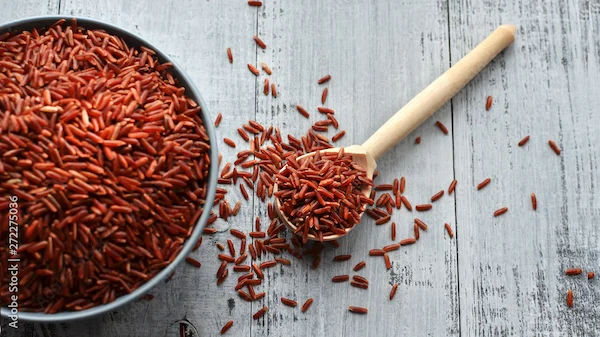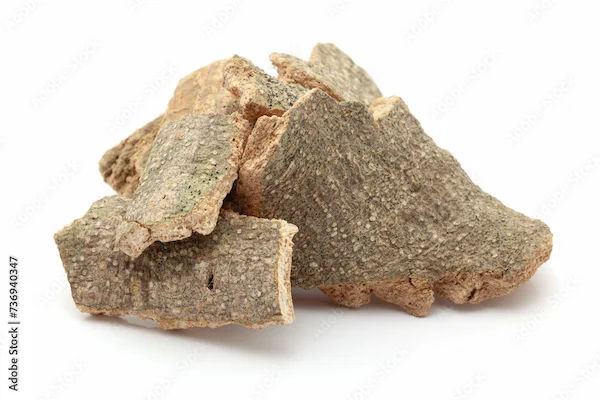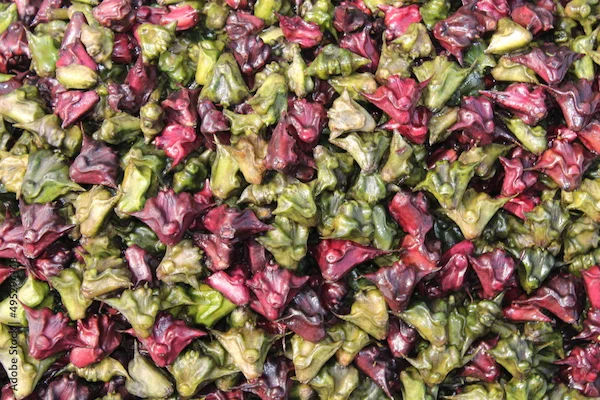Red Rice: Health Benefits and Nutrition
Discover the health benefits of red rice, which is rich in antioxidants, fibre, and essential minerals. A nutritious alternative to white rice that supports heart health, weight loss, and digestion.

Written by
Last updated on 16th Jul, 2025

Introduction
Eating healthy doesn’t have to be complicated, and one simple way to boost your nutrition is by including red rice in your diet. This wholesome grain is packed with essential nutrients and offers several health benefits, making it a great alternative to white rice.
In this article, we’ll explore what red rice is, its nutritional value, health benefits, and how you can incorporate it into your meals.
What is Red Rice?
Red rice is a type of whole-grain rice that gets its deep red or reddish-brown colour from natural pigments called anthocyanins, which are powerful antioxidants. Unlike white rice, which is stripped of its bran and germ during processing, red rice retains these nutrient-rich layers, making it a healthier choice.
It has a slightly nutty flavour and a chewy texture, making it a delicious addition to various dishes.
Nutritional Value of Red Rice
Red rice is a nutritional powerhouse. Here’s a breakdown of what a 100-gram serving of cooked red rice typically contains:
Calories: ~110 kcal
Carbohydrates: ~23g
Protein: ~2.5g
Fibre: ~2g
Iron: ~2% of the daily value (DV)
Magnesium: ~5% of DV
Zinc: ~4% of DV
Antioxidants (Anthocyanins & Flavonoids): High
Additionally, red rice is rich in B vitamins, which help in energy production and brain function.
Health Benefits of Red Rice
Some of the Benefits of red rice are:
1. Supports Heart Health
Red rice is naturally low in fat and cholesterol-free. Its high fibre content helps reduce bad cholesterol (LDL) levels while increasing good cholesterol (HDL), promoting better heart health. The presence of magnesium also helps regulate blood pressure.
2. Aids in Weight Management
Due to its high fibre content, red rice keeps you full for longer, reducing unnecessary snacking. It has a low glycemic index (GI), meaning it releases sugar slowly into the bloodstream, preventing sudden spikes in blood sugar levels.
3. Helps Control Diabetes
The low GI of red rice makes it an excellent choice for people with diabetes or those at risk. It helps maintain steady blood sugar levels, reducing insulin resistance over time.
Consult Top Nutritionists
4. Rich in Antioxidants
The anthocyanins in red rice fight free radicals, reducing oxidative stress and lowering the risk of chronic diseases like cancer and heart disease.
5. Improves Digestion
The fibre in red rice promotes healthy digestion, prevents constipation, and supports gut health by feeding beneficial gut bacteria.
6. Boosts Immunity
Red rice contains zinc and iron, which strengthen the immune system and improve oxygen circulation in the body.
7. Good for Bone Health
It contains magnesium and calcium, essential minerals for maintaining strong bones and preventing osteoporosis.
How to Include Red Rice in Your Diet?
Red rice is versatile and can be used in various dishes:
As a replacement for white rice– Cook it just like regular rice and pair it with curries or stir-fries.
In salads – Mix cooked red rice with veggies, nuts, and a light dressing.
In porridge – A warm, nutritious breakfast option.
In soups or stews – Adds texture and nutrients.
Simple Red Rice Recipe:
Ingredients:
1 cup red rice
2 cups water
A pinch of salt
Method:
1. Rinse the rice thoroughly.
2. Soak for 30 minutes (optional for softer texture).
3. Cook in a pressure cooker or pot for about 20-25 minutes.
4. Fluff with a fork and serve hot.
Who Should Eat Red Rice?
Red rice is beneficial for:
People, looking for a healthier rice alternative.
Those with diabetes or heart conditions.
Individuals aiming for weight loss.
Anyone wanting to boost their nutrient intake.
However, if you have digestive sensitivities, introduce red rice gradually to allow your body to adjust to the higher fibre content.
Where to Buy Red Rice?
You can find red rice in most health food stores, organic markets, or online grocery platforms. Always choose organic and unpolished varieties for maximum benefits.
Conclusion
Red rice is a nutrient-dense, delicious, and easy-to-cook grain that offers numerous health benefits. Whether you’re managing a health condition or simply looking to eat cleaner, switching to red rice can be a great step toward better wellness.
If you have specific dietary concerns or health conditions, consult a nutritionist or doctor to ensure red rice fits well into your diet.
Want personalised dietary advice?
Book a consultation with a nutrition expert on Apollo 24|7 today!
Consult Top Nutritionists
Consult Top Nutritionists
Ms. Lakshmi Tejasvi
Clinical Nutritionist
14 Years • M.Sc - Clinical Nutrition
Hyderabad
Vibgyor Nutri, Hyderabad
Dr Sumanth R
General Physician
2 Years • MBBS
Bengaluru
PRESTIGE SHANTHINIKETAN - SOCIETY CLINIC, Bengaluru

Dr. Ramalinga Reddy
General Physician
5 Years • MBBS MD General medicine
Bengaluru
PRESTIGE SHANTHINIKETAN - SOCIETY CLINIC, Bengaluru
Mrs Sneha P V
Nutritionist
10 Years • Master of science in Food and Nutrition
Bengaluru
Apollo Clinic, Sarjapur Road, Bengaluru
Dt. Ila Sharma
Clinical Nutritionist
18 Years • Master in food & Nutrition
Gurugram
VIPUL GREENS - SOCIETY CLINIC, Gurugram
Consult Top Nutritionists
Ms. Lakshmi Tejasvi
Clinical Nutritionist
14 Years • M.Sc - Clinical Nutrition
Hyderabad
Vibgyor Nutri, Hyderabad
Dr Sumanth R
General Physician
2 Years • MBBS
Bengaluru
PRESTIGE SHANTHINIKETAN - SOCIETY CLINIC, Bengaluru

Dr. Ramalinga Reddy
General Physician
5 Years • MBBS MD General medicine
Bengaluru
PRESTIGE SHANTHINIKETAN - SOCIETY CLINIC, Bengaluru
Mrs Sneha P V
Nutritionist
10 Years • Master of science in Food and Nutrition
Bengaluru
Apollo Clinic, Sarjapur Road, Bengaluru
Dt. Ila Sharma
Clinical Nutritionist
18 Years • Master in food & Nutrition
Gurugram
VIPUL GREENS - SOCIETY CLINIC, Gurugram




